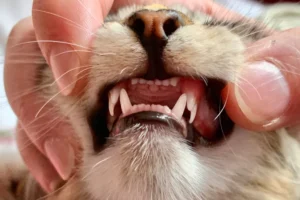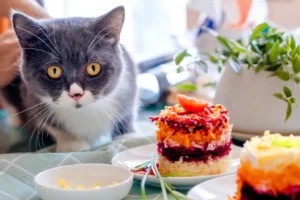Have you noticed that your cat’s gums are looking a little grey? It’s important to understand what might be causing this change in their oral health. Here’s a quick answer to put your mind at ease:
Potential Causes of Grey Gums in Cats
Have you noticed that your feline friend’s gums have turned grey? This change in gum color could indicate various underlying issues that require attention. One potential cause of grey gums in cats is poor circulation, which can result from heart conditions or dehydration. Another reason could be anemia, a condition where there are low levels of red blood cells in the body, leading to a lack of oxygenation and a pale appearance of the gums.
Furthermore, dental problems such as gum disease or oral infections can also manifest as grey gums in cats. These issues can be painful for your furry companion and may require professional dental care. Lastly, systemic diseases like kidney failure or liver issues can impact gum color. These conditions affect the overall health of your cat and can present as changes in gum pigmentation.
Keep in mind that grey gums are not a normal or healthy occurrence for cats. If you notice this change in your cat’s gums, it’s essential to consult with your veterinarian to determine the underlying cause and appropriate treatment.
Symptoms to Look Out For
When it comes to monitoring your cat’s health, paying attention to specific symptoms associated with grey gums can help you identify potential issues early on. Alongside grey gums, other signs to watch for include lethargy, decreased appetite, and unusual behaviors like hiding or aggression.
Additionally, keep an eye out for changes in gum texture, such as dryness or swelling, which can accompany the grey coloration. Excessive drooling or bleeding gums are also concerning symptoms that warrant veterinary evaluation. In more severe cases, your cat may experience difficulty eating or breathing, indicating a serious health issue.
If you observe any of these symptoms alongside grey gums in your cat, seek veterinary help promptly. Early intervention can make a significant difference in your cat’s prognosis and overall well-being. Remember, as a pet parent, you play a crucial role in advocating for your cat’s health and welfare.
Importance of Dental Health
Maintaining good dental health in your feline friend is crucial for their overall well-being. Just like humans, cats can suffer from various dental issues, including gum disease, which can manifest as grey gums. Neglecting your cat’s oral hygiene can lead to pain, discomfort, and even more severe health problems. Regular dental care can help prevent these issues and keep your cat healthy and happy.
Cats with grey gums may be showing signs of poor dental health, such as gingivitis or periodontal disease. These conditions can be painful for your furry friend and may even impact their ability to eat or groom themselves properly. By paying attention to your cat’s oral health and taking proactive steps to promote good dental hygiene, you can help prevent grey gums and ensure your cat’s overall well-being.
Home Care Tips
Promoting oral hygiene in your cat doesn’t have to be complicated. Here are some simple and effective tips to help keep your feline friend’s teeth and gums healthy:
- Regular Brushing: Just like with humans, regular brushing can help prevent plaque and tartar buildup, reducing the risk of gum disease.
- Dental Treats and Toys: Providing dental treats and toys can help keep your cat’s teeth clean by encouraging them to chew and play.
- Annual Dental Check-ups: Schedule regular dental check-ups with your veterinarian to catch any potential issues early and ensure your cat’s oral health is in check.
- Proper Diet: Feeding your cat a balanced diet that supports dental health can also contribute to overall oral hygiene.
- Water Additives: Consider adding water additives specifically designed for dental health to your cat’s water bowl to help fight plaque and tartar buildup.
By incorporating these home care tips into your cat’s routine, you can help prevent issues like grey gums and promote a healthy smile for your furry friend. Remember, good dental health is essential for your cat’s overall well-being, so make sure to prioritize their oral hygiene.
Professional Treatment Options
If your cat’s gums are grey, it could indicate underlying dental issues that require professional attention. Schedule a visit to your veterinarian to have your cat’s oral health assessed. Treatment options may include dental cleanings, extractions, or other procedures to address any underlying problems causing the discoloration. Your vet will be able to recommend the best course of action based on your cat’s individual needs.
Preventative Measures
To prevent grey gums in your cat, it’s essential to prioritize their dental health. Regular check-ups with your veterinarian can help catch any issues early on. Additionally, establishing a dental care routine at home can go a long way in preventing dental problems. Brushing your cat’s teeth regularly, providing dental treats or toys, and incorporating dental-friendly food can all contribute to maintaining your cat’s oral health. Remember, prevention is key when it comes to keeping your cat’s gums healthy and pink.
Additional Unique Insight:
One way to help prevent grey gums in your cat is by incorporating dental water additives into their routine. These additives can help reduce plaque and bacteria in your cat’s mouth, promoting better overall oral health. Ask your veterinarian about the best dental water additives to use for your cat’s specific needs.
Understanding Grey Gums in Older Cats
As cats age, it is not uncommon for their gums to appear grey. This change in gum color can be attributed to a variety of factors, including reduced blood flow to the gums, decreased melanin production, and the natural aging process. Grey gums in older cats may also signal underlying dental issues such as periodontal disease, tooth decay, or oral infections.
To support the oral health of senior felines with grey gums, it is essential to schedule regular dental check-ups with a veterinarian. Professional cleanings and treatments can help address any dental issues and prevent further complications. Additionally, providing dental treats, toys, and regular teeth brushing can help maintain your cat’s oral hygiene and potentially slow down the progression of grey gums.
Remember, grey gums in older cats should not be ignored. Monitoring your cat’s gum color, along with their overall dental health, can help ensure they lead a comfortable and healthy life in their golden years.
Unique Dental Issues in Different Cat Breeds
Certain cat breeds may be more prone to dental issues that can manifest as changes in gum color, including grey gums. Breeds such as Persians, Siamese, and Abyssinians are known to have unique dental needs that require special attention.
When caring for these specific breeds, it is crucial to be proactive in monitoring their oral health. Regular dental cleanings, specialized dental diets, and breed-specific dental care products can all contribute to maintaining healthy gums and teeth. Additionally, staying informed about common dental issues in your cat’s breed can help you address any potential problems early on.
By being proactive and attentive to your cat’s dental health, especially if they belong to a breed prone to dental issues, you can prevent complications and keep their gums healthy and pink. Remember, a little extra care tailored to your cat’s breed can go a long way in ensuring their overall well-being.
#
Hey there! If your furry friend’s gums are looking a little grey, it could be a sign of a potential health issue. Grey gums in cats can indicate a variety of issues, such as dehydration, anemia, or even oral health problems. It’s essential to keep an eye on your cat’s gum color and consult with your veterinarian if you notice any changes.
When it comes to oral health, cats are often overlooked. Did you know that feline dental care is crucial for their overall well-being? Just like humans, cats can suffer from dental issues if their teeth and gums are not properly cared for. Regular dental check-ups and cleanings can help prevent gum disease and other oral health issues in your feline friend.
Here’s an interesting fact – cats are masters at hiding pain, including dental pain. This means that your cat could be experiencing discomfort or issues with their gums, even if they are not showing obvious signs. Keeping an eye on their gum color and overall oral health is key to catching any problems early and ensuring your cat stays healthy and happy.
Remember, grey gums in cats should not be ignored. It’s always best to consult with a veterinarian to rule out any serious health concerns and ensure your beloved pet receives the care they need. Your cat’s gums are a window into their overall health, so keeping an eye on them is essential for their well-being. Stay proactive and keep those kitty smiles bright and healthy!
Alex, a passionate animal lover, has experience in training and understanding animal behavior. As a proud pet parent to two dogs and three cats, he founded AnimalReport.net to share insights from animal experts and expand his knowledge of the animal kingdom.









